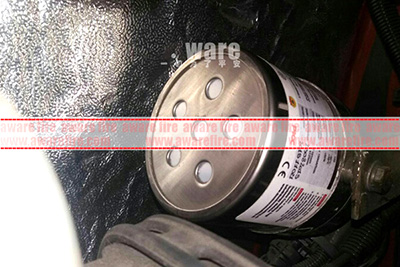Categorieën
- Onze blog (69)
- technologische ondersteuning (18)
Spoorweg locomotieven hebben honderden jaren ontwikkelingsgeschiedenis en vele jaren technische innovatie, vandaag hebben we het over de brandbeveiliging van locomotieven, Allereerst, we zouden moeten praten over de kennis van spoorweglocomotieven.

De spoorlocomotief zelf heeft geen stroomvoorziening, of het nu een passagierslocomotief of een goederenlocomotief is, we moeten veel rijtuigen met elkaar verbinden om een trein te vormen, dan kan het alleen bewegen nadat het door een locomotief is getrokken. daarom, de locomotief is de basiskracht van het spoorvervoer.
Er worden veel soorten locomotieven op het spoor gebruikt, volgens het oorspronkelijke vermogen van de locomotief, er zijn stoomlocomotieven, diesellocomotieven, en elektrische locomotieven.
De toepassing van stoomlocomotieven heeft een geschiedenis van meer dan 170 jaar. Het zet de warmte-energie van een brandstof om (steenkool, olie-, hout) omgezet in mechanische energie via een stoommachine,
Het zet de warmte-energie van een brandstof om (steenkool, olie-, hout) omgezet in mechanische energie via een stoommachine, om de trein te laten rijden. De stoomlocomotief bestaat hoofdzakelijk uit een ketel, stoomturbine, kader, kolen water voertuig, koppeling, bufferapparaat, en reminrichting.
De stoomlocomotief heeft kenmerken van een laag thermisch rendement, groot energieverbruik, en kleine transmissiecapaciteit, dus het is momenteel in de wereld uitgefaseerd.
Een diesellocomotief is een locomotief die wordt aangedreven door een dieselmotor, de kenmerken zijn een hoog thermisch rendement, lange ononderbroken werktijd, geschikt voor gebruik over lange afstanden.
De momenteel gebruikte diesellocomotieven kunnen worden onderverdeeld in elektrische aandrijving en hydraulische aandrijving.
De elektrische locomotief zelf vervoert geen elektrische energie, het hangt af van het onderweg verkrijgen van elektrische energie van de bovenleiding, hij wordt aangedreven door een tractiemotor.
De elektriciteitscentrale zendt 110 tot 220 kv driefasige netfrequentie wisselstroom via de transmissielijn naar het spoorwegtractie-onderstation, welke levert 25 tot 27.5 kv eenfasige voedingsfrequentie Wisselstroom naar de bovenleiding voor elektrische locomotieven.
Een elektrische locomotief bestaat hoofdzakelijk uit de voertuigcarrosserie, loopwerk, onderstel, koppelaar en bufferinrichting, remapparaat, en een complete set elektrische apparatuur.
De elektrische locomotief heeft de voordelen van een groot vermogen, hoge startsnelheid, goed in klimmen, eenvoudig te implementeren hoge snelheid en zware belasting.
Momenteel, als gevolg van de uitgebreide ontwikkeling van elektrische energie en de voortdurende ontwikkeling van nieuwe energie, de elektrische locomotief is de meest gebruikte geworden.
De hogesnelheidstrein, metro, en lightrail die we gebruiken, worden allemaal aangedreven door elektrische locomotieven.
echter, ongeacht het type locomotief, inclusief elektrische locomotief, ze produceren veel warmte als ze in werking zijn.
Er liggen veel leidingen op de locomotief en de ruimte is zeer beperkt, het is gemakkelijk om thermische wegloper te veroorzaken onder de voorwaarde van langdurig bewegen, veroudering van de lijn, en hoge temperaturen van het weer.
Het verlies van een locomotief als gevolg van brand na een thermische runaway is enorm, en het economische verlies is duizenden dollars. daarom, we moeten nadenken over de kwestie van locomotiefbrandpreventie, en het is noodzakelijk om een geschikt locomotiefbrandbeveiligingssysteem te selecteren.
Zoals we eerder vermeldden, er zijn veel locomotiefleidingen en netwerken op de dure spoorlocomotief en de ruimte is zeer beperkt, Het geïnstalleerde brandblussysteem moet dus de volgende kenmerken hebben:
Momenteel, grootschalige aardgasproductie, schuim, en watermistbrandblussystemen zijn niet geschikt voor spoorlocomotieven. de overige twee producten zijn het meest waarschijnlijk de keuze voor locomotiefbrandbeveiliging, zijn: brandbeveiliging in spuitbussen of Fire Trace Tube onderdrukkingssysteem.
Laten we hierbij deze twee systemen vergelijken: het Aerosol-systeem en het Fire Trace-systeem.
Het Aerosol-systeem heeft de volgende belangrijkste voordelen:
Fire trace systeem heeft de volgende belangrijke voordelen:
daarom, gezien de bovengenoemde kenmerken vanuit het perspectief van veiligheid en gemak zullen aërosolbrandblussystemen geschikter zijn voor spoorweglocomotieven.
Veel mensen maken zich zorgen dat ze niet weten hoe ze aërosolsystemen op spoorweglocomotieven moeten installeren. Het is heel eenvoudig te installeren op de spoorweglocomotief. Over het algemeen, het aërosolapparaat heeft een montagebeugel, klem, en schroef, boor gewoon een paar gaten op de juiste positie op de locomotief (meestal de positie die vatbaar is voor vuur), en bevestig het vervolgens met de montagebeugels.
Er is ook een handigere manier van installeren, dat is, te installeren door magneetadsorptie, en bevestig het brandblusapparaat direct op de ijzeren plaat van de locomotief.
Op de bedrading, sluit de brandblusinstallatie met een zachte draad aan op de accu van de locomotief, en installeer vervolgens een startknop en een alarmapparaat in het lab, Zo simpel is het!
Onze dealers over de hele wereld hebben veel installatiegevallen, Hieronder noemen we er enkele:
Het is haalbaar om een aërosolbrandblussysteem te kiezen als brandbeveiligingsoplossing voor spoorweglocomotieven.